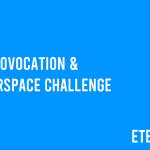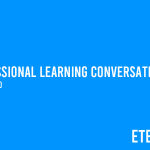Wang, A. I., & Tahir, R. (2020). The effect of using Kahoot! for learning – A literature review. Computers and Education, 149, 103818. https://doi.org/10.1016/j.compedu.2020.103818
Wang & Tahir’s literature review investigates the effect of using “Kahoot!”, a game-based student response system, for learning. The authors specifically look at how Kahoot! affects learning performance, classroom dynamics, and student anxiety while also questioning student and teacher perceptions of the learning tool. The literature review concludes that using Kahoot! in learning environments can positively affect student performance as both students and teachers perceive it as a valuable learning tool.
To conduct this literature review, Wang & Tahir created a review protocol to assist in their thorough search for relevant work. This protocol would assist in their search, filtering, data extraction, and synthesis steps to provide them measurable and comparable results to conclude. To be included, the article must reference Kahoot! in the title or abstract, be written in English, and be published in an international peer-reviewed journal or conference. Ninety-three articles comprising of quantitative and qualitative analyses were chosen to be included in this review, of which 86% contained quantitative analyses while 52% contained qualitative analyses.
The cumulative findings of Wang & Tahir provided conclusions that can be seen as reasonable since 88% of studies concluded that Kahoot! had a positive impact on students and teachers. The review protocol was well designed and many threats to validity were clearly identified. The authors provided clear reasoning for why certain articles were not included in this review. The articles selected mostly contained sample sizes that would be seen as proficient; however, a few contained incredibly small sample sizes. Wang & Tahir have provided an in-depth and agreeable literature review to evaluate the effect Kahoot! can have on teachers and students as a game-based student response system.
Zainuddin, Z., Chu, S. K. W., Shujahat, M., & Perera, C. J. (2020). The impact of gamification on learning and instruction: A systematic review of empirical evidence. Educational Research Review, 30, 100326. https://doi.org/10.1016/j.edurev.2020.100326
Zainuddin et al. provide a systematic literature review based on the summary of empirical findings relating to the impact and use of gamification in education. The authors attempt to answer six research questions relating to methodological approaches, underlying theoretical models, available apps and platforms, participants’ levels of education and common game mechanics, potential effects of implementing gamification in different education fields, and potential areas of research that should be explored next. The authors conclude that there is a positive effectiveness of gamification in education as evident in changes to student engagement and motivation, academic achievement, and interaction and socialisation.
The authors used a systematic methodological approach in their research design to search and collect data from their selected articles. Only academic journals published in Clarivate Analytics’ Web of Science that contained empirical research with descriptions of the theories and methods used were included in this review. Furthermore, the journals were required to be written in English and relate to gamification at any level of education across the world. Of the 46 articles included in this review, 25 used quantitative methods, 19 used mixed methods, and 2 used qualitative methods.
The findings of Zainuddin et al. are meaningful to gamification research as they provide a thoughtful review of current research. The authors clearly presented their findings and provided reasonable explanations for their choice of research methods. This literature review was limited in scope due to only including articles published between 2016 and 2019 in Clarivate Analytics’ Web of Science. Of the 46 articles, only 10 articles pertained to elementary schools and secondary schools collectively, which also limits this review. However, the authors use this data to provide a foundation for future research by identifying limitations in current gamification research to provide insight and reasoning for potential future areas of research.






